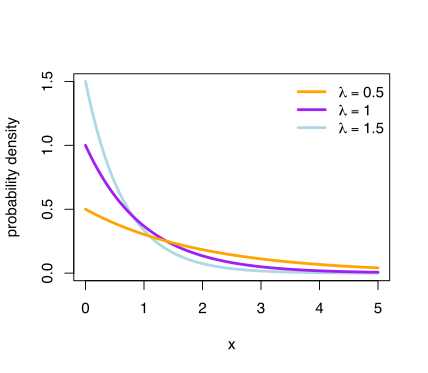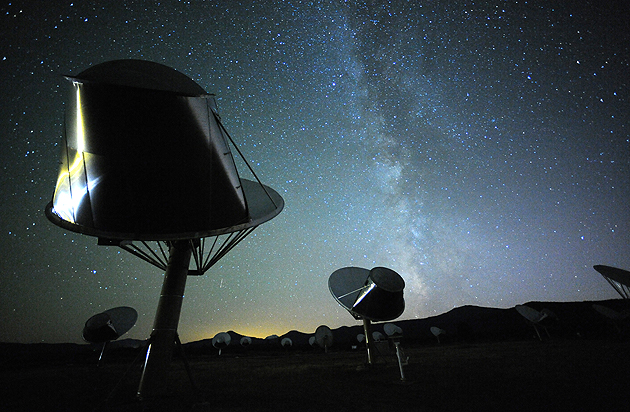Recently at UT, author Matt Williams has been writing a series called “Beyond Fermi’s Paradox”, which takes a look at possible resolutions to one of the most famous questions in science: “Where is everybody?” As Matt discusses, there are multiple hypothetical solutions, but there may eventually come a day when we can definitively answer it.
Consideration of that day opens up a whole host of new questions, not the least of which is what will an intelligent civilization we find be like? Carl Sagan popularized the notion that it is very unlikely that any extraterrestrial civilization would be equivalent to ours in terms of technological progress. What he did not address was the relative age of the civilization and what that might mean in terms of their interest in communicating with us. Now a team of astronomers have come up with an answer to that question using one of the most underappreciated mathematical tools: statistics. Their model provides a simple answer: any intelligent civilization is likely older than us, and potentially much older.
The work, led by Dr. David Kipping at Columbia, is detailed in a new paper in the International Journal of Astrobiology. It started with Dr. Kipping and his co-authors, Dr. Adam Frank of the Flatiron Institute, and Dr. Caleb Schraf of The University of Rochester, considering how humans would contact a billion year old civilization. Understanding the importance of that question would require estimating how likely it is for a billion year old civilization to exist.
That is not a particularly easy question to answer, as we don’t have any direct evidence of billion year old civilizations. However, the historical record does provide two types of similar data sets, though on much smaller time scales: how long historical civilizations have lasted, and how long species themselves last. The authors attempted to find a statistical model that fit those two data sets reasonably. It is not too far of a logical leap to apply that model to the lifetime of extraterrestrial civilizations.

Credit: Sir Arthur Evans, Scripta Minoa: The Written Documents of Minoan Crete
Fittingly, both data sets adhere to a similar statistical model, known as an exponential distribution. Exponential distributions are very common in statistics, and conveniently require only a single variable to determine the shape of the curve. In this model, the entire distribution is described by the average lifetime of a civilization. Historical data was again useful when searching for reasonable values of that parameter, with the best fitting average lifetime being about twice our civilization’s current age.

Credit: Newystats / Wikipedia
Dr. Kipping and his co-authors point out that this exponential distribution, though a reasonable point to start to draw out some detail, is a simplification of what is most likely a very complex calculation. Despite that simplification, the paper is able to draw several very interesting insights.
The average age of any potential extraterrestrial civilization is one of those insights. The authors calculate that, on average, a civilization that we detect will be approximately two times older than our own. One interesting caveat here is that they do not directly state how old our own civilization is, and point out that the math works out no matter what age is used. For example, if a person defines the age of our civilization to be the 12,000 years that we have been farming, then it is likely that civilizations will continue to farm in a detectable way for 24,000 years on average. However, that does not mean that the civilization is destroyed at the end of that time period, it simply means that they are no longer doing the thing that was used to define a “civilization”.

Credit: Aleph Farms
Another example shows how this might work. By the author’s estimations, the lifespan of a civilization that emits radio waves into space is only likely to be 200 years, about twice the lifespan of the 100 years that we have already been doing so. Around that time period, a civilization that uses radio would most likely start to use more advanced technologies that replace omnidirectional broadcast radio waves, such as lasers. So while it has ceased to exist as a “radio emitting” civilization, its members are still alive and well using a new, somewhat less detectable technology.
The paper also gives some further insight into the subject of that detectability. Back in Sagan’s time the search for extraterrestrial intelligence (SETI) was focused almost exclusively on radio waves, because that was the most common form of electromagnetic waves that we as a species emitted into space. As technology has advanced, however, we have become less and less reliant on radio, meaning that we send out fewer and weaker radio transmissions now than we did in Sagan’s time.

Alternatively, we have also become more adept at seeing other potential features of a technological civilization. Collectively these features have become known as “technosignatures” and range from directed laser pulses down to heat maps of exoplanets. Dr. Kipping points out that a new generation of telescopes will actually be able to detect some of these technosignatures on nearby exoplanets, giving us a view of potential alien civilizations that we have never been able to observe before. It could also make the sort of questions he addresses in the paper that much more relevant.
Another of question the paper addresses is the likelihood that a detected civilization is either older or younger than us. This could have far reaching implications for how, or even if, we decide to initiate first contact. The conclusion the paper comes to is fascinating, and isn’t intuitively obvious at first glance.
Exponential curves have a large slice of the area under the curve (i.e. total number of civilizations) in the lower part of the curve, with an ever decreasing number in a farther out extended “tail”. Using this exponential distribution curve, roughly 60% of civilizations are likely younger than us, while 40% are likely older. At first glance, this would imply that we are more likely to encounter a civilization that is younger than us. However, this does not account for a phenomena known as temporal bias.
Dr. Kipping uses a vacation analogy to describe temporal bias. If you’re on vacation in the Dominican Republic, are you more likely to run into someone who is there visiting for two days or two weeks? The obvious answer is two weeks, as there is simply more of a chance that you will be on vacation at the same time as them. The same applies for co-temporal civilizations. Even though there are more civilizations that are shorter lived than our own, the fact that they are shorter lived means it is much less likely that we will end up existing at the same time as them. As Matt explains in his Fermi Paradox series, this is an example of the “Brief Window Hypothesis”. The Cool Worlds Youtube channel, run by Dr. Kipping, also has a video explaining this paper that has an excellent graphic showing how this temporal bias works in practice.
Credit: Cool Worlds Youtube Channel
This result is the primary conclusion of the paper – that any civilization that we detect is more likely to be older than us rather than younger. In fact the math shows that there is a 10% chance that a civilization we manage to find would be more than 10 times older than us. If these civilizations follow the exponential technological growth curve that humanity has been following for the past few centuries “the mind boggles as to how much more advanced such a civilization could be” Dr. Kipping notes.
He also pointed out that these statistical models have the most practical impact when considering civilizations of ambiguous technical ability. If a civilization is noticeably more advanced than us, such as one that can construct a Dyson swarm, there will not be much question about what their technological capabilities are compared to ours. However, if we do manage to detect a heat island on a nearby exoplanet, it could represent a civilization that is just moving on from the stone age or one that has already developed a fully fledged AI.

The true outcome of these statistical models is to show that, more likely than not, any civilization we can detect will be more older than us. Those that are interested in thinking about if and how we would interact with any detectable civilization should keep that fact well in mind. And if someday we do manage to discover irrefutable evidence of another civilization, we can add another data point to the model the authors developed and see how valid it truly is.
Learn More:
International Journal of Astrobiology – Contact inequality: first contact will likely be with an older civilization
Cool Worlds – Why We May Be Surrounded by Older Alien Civilizations

